
Creative DIY Garden Fence Ideas That Make a Statement
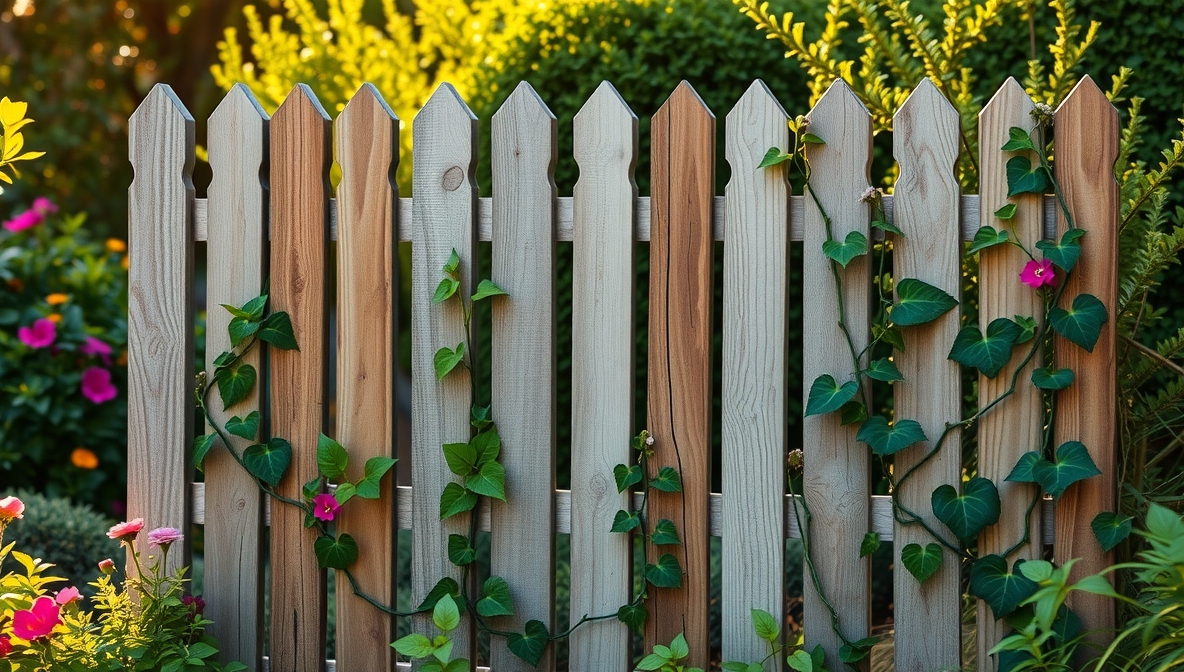
A garden fence does more than mark your territory. It sets the tone for your outdoor space, reflects your style, and adds character to your garden. Bold, rustic, whimsical, or modern—your fence can become a feature, not just a function. With a few simple tools and a weekend’s worth of creativity, you can build a barrier that brings charm and structure to your yard.
Old pallets, repurposed shutters, even bicycle wheels can take on new life as eye-catching garden enclosures. Paint and pattern play a huge role too. A splash of color or a clever design can turn plain wood into art. Whether you’re aiming for a cozy cottage feel or a sleek, minimalist look, the right fence idea makes the difference.
Budget doesn’t need to be a barrier either. With a little resourcefulness and some DIY spirit, you can craft a fence that protects your plants while impressing your guests. Every garden tells a story—let your fence be the opening chapter. This guide rounds up unique ideas to spark your imagination and get your hands dirty.
Table of Contents
ToggleDIY Garden Fence Ideas
A garden fence does more than mark space. It keeps animals out, adds privacy, and boosts the look of your yard. Many people want to build their own fence. It saves money and lets them get creative. Below are ten simple and budget-friendly DIY garden fence ideas. Each idea comes with materials and steps to follow.
1. Wooden Pallet Fence
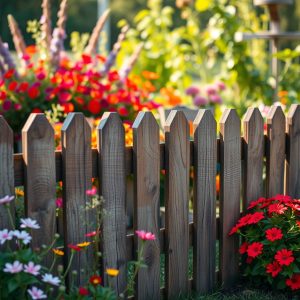
Materials: Wood pallets, nails, hammer, sandpaper, wood stain or paint, and a saw (if needed).
Steps:
- Gather wooden pallets of the same size.
- Sand the pallets to remove rough spots.
- Paint or stain the wood if you like.
- Place the pallets side by side.
- Nail or screw them together.
- Fix the fence into the ground using metal stakes or wood posts.
Wood pallets are easy to find. Many stores give them away for free. This type of fence looks rustic and works great for small gardens.
2. Bamboo Fence
Materials: Bamboo sticks, twine or wire, garden stakes or wood posts, pruning shears.
Steps:
- Cut bamboo sticks to the same height.
- Use garden stakes as support posts.
- Tie the bamboo sticks to the posts using twine or wire.
- Place the posts into the ground.
Bamboo adds a natural feel. It is strong and can handle rain and wind. This fence gives privacy and charm.
3. Chicken Wire Fence
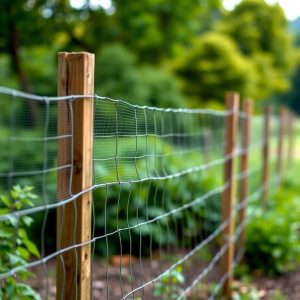
Materials: Chicken wire, wooden posts, nails or a staple gun, wire cutters, and gloves.
Steps:
- Measure your garden area.
- Put wooden posts in the ground every few feet.
- Cut chicken wire to the right size.
- Wrap the wire around the posts.
- Secure it with nails or staples.
This fence keeps small animals out. It is light and low-cost. You can also add a wood frame to make it look better.
4. Recycled Door Fence
Materials: Old doors, hinges, screws, screwdriver, paint (optional), and support stakes.
Steps:
- Collect old doors of the same height.
- Paint them if you want a fresh look.
- Line them up and join with hinges.
- Fix the fence with stakes for support.
Old doors give a vintage feel. Each door adds character. This fence suits cottage-style gardens.
5. Lattice Fence
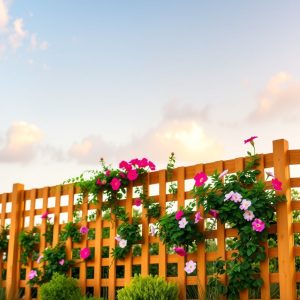
Materials: Wooden lattice panels, wooden posts, nails, and a hammer.
Steps:
- Set wooden posts in the ground.
- Place lattice panels between the posts.
- Nail the panels in place.
Lattice fences are light but strong. You can grow vines on them. They give some privacy while letting light through.
6. Wattle Fence
Materials: Thin branches or twigs, two rows of wooden stakes, saw or pruning shears.
Steps:
- Put wooden stakes in two rows.
- Weave the branches between the stakes.
- Cut off extra branches.
Wattle fences have an old-world charm. They are eco-friendly and use natural materials. This fence works well for flower beds or herbs.
7. Picket Fence
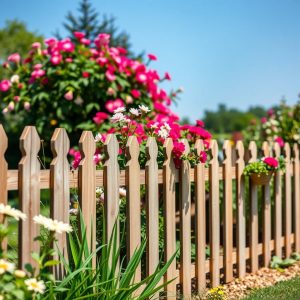
Materials: Wooden boards, nails, hammer, saw, paint or wood stain, wooden posts.
Steps:
- Cut boards to the same length.
- Paint or stain them.
- Nail the boards to horizontal rails.
- Fix the fence with vertical posts in the ground.
Picket fences are classic. They make any garden look neat. You can paint them white for a traditional touch.
8. Rope Fence
Materials: Thick rope, wooden posts, drill, and glue (optional).
Steps:
- Place wooden posts in the ground.
- Drill holes for the rope.
- Thread the rope through the holes.
- Tie knots to keep the rope in place.
Rope fences are simple and stylish. They work best for marking paths or borders. They do not block views.
9. Cinder Block and Wood Fence
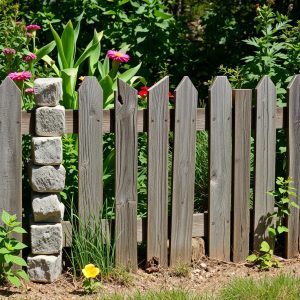
Materials: Cinder blocks, wooden planks, paint (optional).
Steps:
- Stack cinder blocks to the height you want.
- Slide wood planks through the block holes.
- Paint the blocks or wood if desired.
This fence is modern and strong. It adds weight and structure to your garden. You can also use the blocks as planters.
10. Recycled Bike Wheel Fence
Materials: Old bike wheels, metal rods or stakes, wire or zip ties.
Steps:
- Collect old bike wheels.
- Attach them to metal rods with wire.
- Push the rods into the ground.
Bike wheel fences are fun and artistic. They work as a border and a garden art piece. This idea fits a creative and bold style.
FAQs
What is the cheapest garden fence to build?
A chicken wire or bamboo fence is among the cheapest. You need only a few tools and basic materials.
Can I build a garden fence without tools?
Some fences like bamboo or rope styles need very few tools. But most projects need at least a hammer or drill.
What fence keeps rabbits and deer away?
A tall chicken wire fence or solid wood fence works well. Make sure there are no gaps at the bottom.
Do I need to treat the wood before building?
Yes. Paint or stain helps protect wood from rain and bugs.
How tall should a garden fence be?
A 3 to 4-foot fence works for most small animals. For deer, make it at least 6 feet tall.
Conclusion
Building a DIY garden fence adds beauty and function. You can use simple or recycled materials. Every idea fits a different garden style. Whether you want to keep animals out or add charm, a homemade fence can do both. Start with a small section. See what works best for your yard. Then expand and enjoy your garden space.
